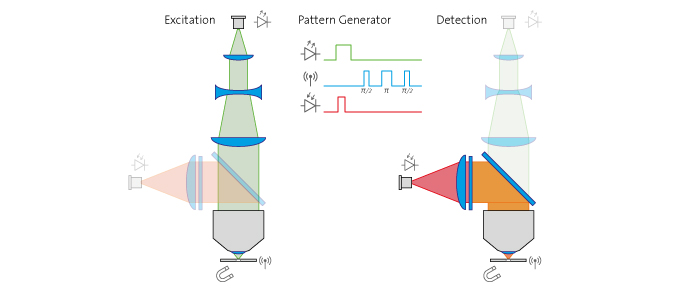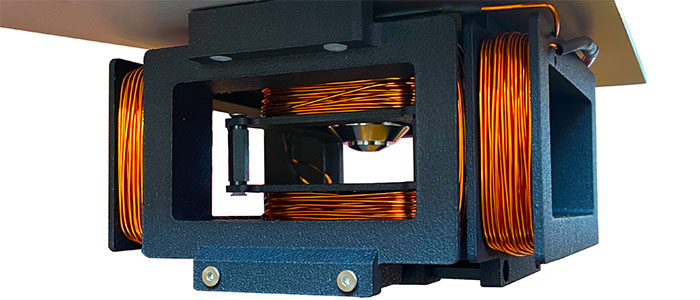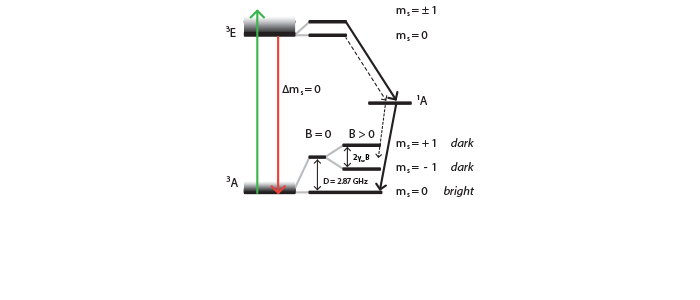Quantum Sensing Education Kit by NV-Centers
- Overview
- Key Features
- Core Components
- Applications
- Sample Experiments
- Downloads
This quantum diamond magnetometer and its experiments will introduce students to the concepts of quantum sensing. The design of the quNV is based on recent achievements of scientific research and demonstrates quantum sensing in a simple and user friendly system for student lab courses at colleges and universities.
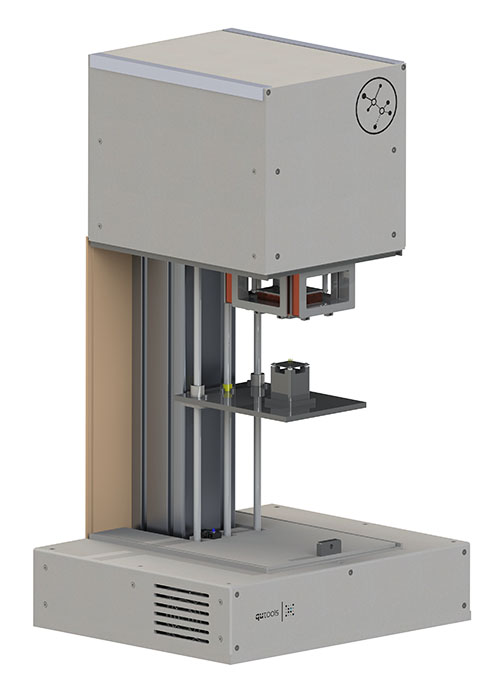
The core of the quNV is a HPHT diamond with an ensemble of nitrogen-vacancy (NV) centers. The NV centers can be excited by light in the visible spectrum. The excited state decays back to the ground state either directly or via an intermediate shelving state with different fluorescence intensity. The decay path depends on the electron spin of the NV centers. Thus, the electron spin can be read out optically.
The electron spin can be manipulated further by microwave radiation. By applying magnetic and electric fields, the energy levels of the spins can be shifted. Hence, different experiments and measurement applications are possible.
Key Features
| Probe | HPHT Diamond |
| Excitation | 516 nm Diode Laser, CW and Pulsed |
| Microwave | 4 GHz RF Sweep Generator, CW and Pulsed |
| Detection | Photodiode, Control & Read-Out Unit |
| Optics | 20x Objective |
| Magnetic Field | 3 Helmholtz Coils |
Core Components
The core of the base quNV is a HPHT diamond with an ensemble of nitrogen-vacancy (NV) centers. The NV centers can be excited by light in the visible spectrum. The excited state decays back to the ground state directly or via an intermediate shelving state with different fluorescence intensity. The decay path depends on the electron spin of the NV centers. Thus, the electron spin can be read out optically.
Laser Excitation
The NV centers are excited by a powerful 50mW continuous wave laser with a wavelength of 516nm. The laser is collimated and expanded to create optimal conditions for the following microscope objective. The objective focuses the laser light onto the nitrogen-doped diamond.
Diamond Sample Stack
The laser spot focused by the objective hits the diamond, which is built into a circuit board. The microwave antenna is also integrated in the circuit board. It is mounted on a stack to which the specimen itself is attached. The circuit board with the antenna and the diamond can be replaced by other boards with different diamonds, depending on the experiment.
Microwave Sweep and Pulse
The microwave radiation is emitted by the antenna within the circuit board. It is controlled by electronic components in the base of the quNV. The microwave can be varied in amplitude, swept in frequency and even pulsed.
Helmholtz Coils
The three Helmholtz coils surround the sample stack. These three coils generate a homogeneous magnetic field as a bias for the NV centers. All three coils can also be controlled individually to adjust the field in three dimensions. The coils are equipped with temperature monitoring sensors for safety reasons.
Pattern Generator
The electronics in the base of the quNV also includes a pattern generator. This pattern generator can control and pulse the laser, the microwave and the photodiode for fluorescence readout. Different pulse patterns can be applied to all three components with the desired time intervals in between. The cw laser can be pulsed for excitation and readout, the microwave for the emission of π and π/2 pulses and the photodiode gated.
Photodiode
The fluorescence from the excited NV center is also collected by the microscope objective and returned to the unit on top of the instrument by the same optical path. There, the red fluorescence is separated from the green excitation laser by a dicroic mirror. After two mirrors for proper alignment, the fluorescence is filtered by a bandpass to measure only the red fluorescence rather then the excitation laser nor the environment. In the end, the light is focused on the active region of the fast photodiode.
Measurement
In a basic measurement, a magnetic bias field by the Helmholtz coils is set. Then the laser excites the NV centers in the diamond, which fluoresce in the red spectrum. That light is detected by the photodiode. Now the microwave frequency is swept. Plotting this frequency versus the fluorescence intensity shows the resonance frequencies of the NV centers.
Applications
The dynamics of the NV center allow applications like spin initialization and state readout. Therefore, the center is suitable for quantum sensing applications like magnetic field sensing, spin relaxation time measurements and optically detected magnetic resonance (ODMR).
Due to their scalability, long coherence times and ability for interaction with photons, NV centers are of high interest for research in quantum information processing. Qubits can be defined as spin states of single electron or nuclear spins.
Possible applications of the quNV are:
Sample Experiments
Here is a list of the experiments you can do with the quNV:

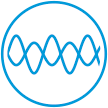 Interferometers
Interferometers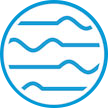 Time-Tagger
Time-Tagger Quantum Physics Kits
Quantum Physics Kits